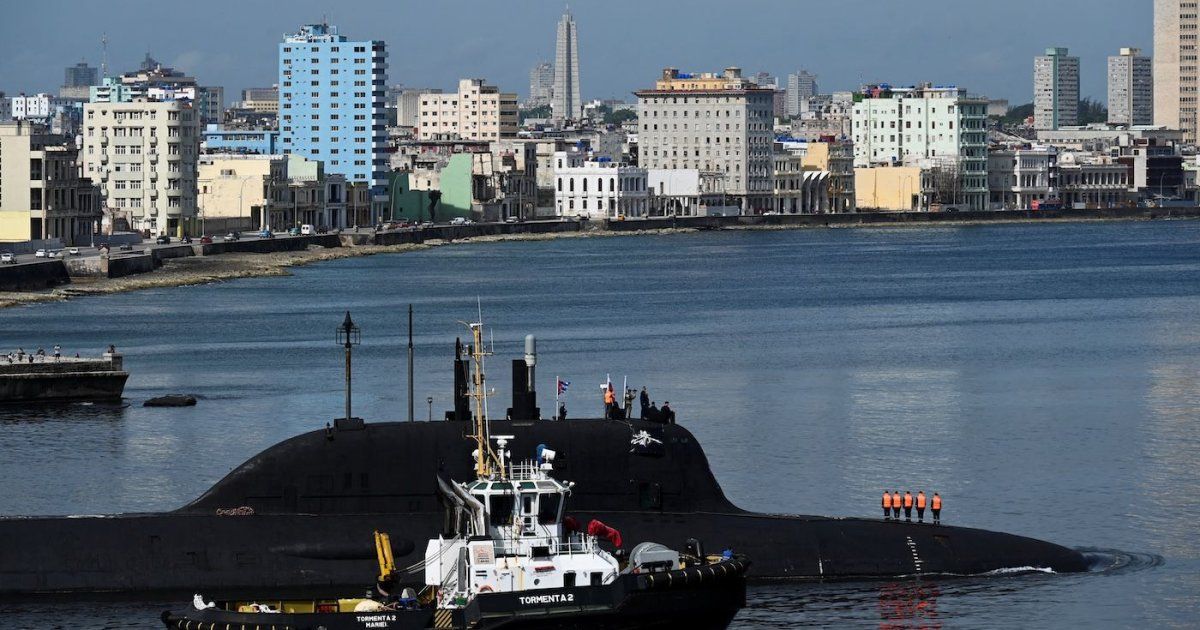HAVANA CUBA — A second contingent of Russian fleet ships began its visit to Cuba in less than a month and a half on Saturday. The first of the three expected ships, the training ship “Smolniy,” was greeted in Havana Bay with cannon salutes as a greeting from the regime on the island.
These vessels are expected to remain in the capital’s harbours until August 30.
In mid-June, another group of three warships, including a nuclear-powered submarine, also docked in Havana, drawing the attention of the US government, which closely followed the operations and maneuvers of these ships, although it said they did not represent a danger.
In a statement, the Ministry of the Armed Forces reported earlier this week that the arrival of these ships was “a historic practice” with nations with which it maintains “relations of friendship and collaboration,” but did not offer details about the objective of the Russian presence.
The Smolny is accompanied by the offshore tanker Yelnya and the patrol vessel Neustrahimiy.
Authorities said that people could even board the Smolniy on Sunday and Monday, a common practice when large vessels arrive in the harbour.
Russian deployment in Havana, Kremlin’s defence axis
As reported by Diario de Cuba, the arrival of a new Russian war flotilla in Cuba would be part of the Kremlin’s preparations for the permanent deployment of its naval assets on the island, said a Russian military expert.
Alexander Sharkovsky noted that “the base of the Russian Armed Forces, both land and sea, is already being recreated in Cuba. If dry cargo ships are used, (nuclear) missiles can be delivered there again, as was the case in 1962.”
The Kremlin spokesman, who frequently appears on Russian television, added that “since the United States intends to deploy its medium-range missiles on German territory, it means that our missiles should be somewhere near the United States. This is a very important strategic reserve for the security of the Russian Federation.”
Sharkovsky noted that Moscow would speed up the delivery of a large number of warships to Cuba if the White House deploys its missile systems on the territory of European countries. Washington has already announced the placement of long-range missiles in Germany in 2026, after which the Kremlin threatened a “military response.”
The statements of Sharkovsky, known for having called in 2022 to attack UK ships in retaliation for London’s support for Ukraine after the Russian invasion, they coincide with the threats launched by Vladimir Putin last June, when he said that Russia could deliver long-range missiles to third countries, which would use these weapons to attack “strategic points” in the territory of Western allies that supply arms to Ukraine, in what he described as a “symmetrical” response to Western arms deliveries to kyiv.
Later, just hours after the arrival in Havana of a flotilla of three warships and a nuclear-powered submarine from Moscow, which remained on the island between June 12 and 17, Kremlin spokesman Dmitry Peskov said during a press conference that “there is no cause for concern” on the part of the West regarding the possible creation of a Russian military base in Cuba.
“Military exercises are a normal practice in various regions of the world for all states, especially for such a large maritime power as the Russian Federation. Conducting such exercises is also a normal practice, so we see no cause for concern in this case. That’s all I can say on this issue,” the official said.
From Havana to Venezuela
However, those ships then moved to Venezuela and on Wednesday, July 24, they crossed the Strait of Gibraltar and entered the Mediterranean Seaafter crossing the Atlantic, the Black Sea Fleet reported.
During the deployment of Kremlin weapons in the Caribbean, the US and Canada, members of the North Atlantic Treaty Organization (NATO), closely monitored and watched Russian war assets. Washington sent one of its nuclear submarines to the Guantanamo Naval Base and Canada anchored a ship of its Navy in Havana Bay, while naval and air assets from both countries accompanied the movement of Russian assets across the open sea.
Position of the Cuban regime
The arrival of three ships from Russia’s Baltic Sea Fleet to Havana between July 27 and 30 was described by the Cuban Ministry of the Revolutionary Armed Forces (MINFAR) as a “working visit,” despite the unusual increase in the frequency of such arrivals.
According to the Cuban military, the flotilla is made up of the training ship Smolny, the patrol frigate Neustrashimy and the refueling tanker Yelnya. The programme of the visit includes meetings with the head of the Cuban Navy, the authorities of Havana and excursions to historical and cultural sites.
Source: With information from AP/Diario de Cuba

